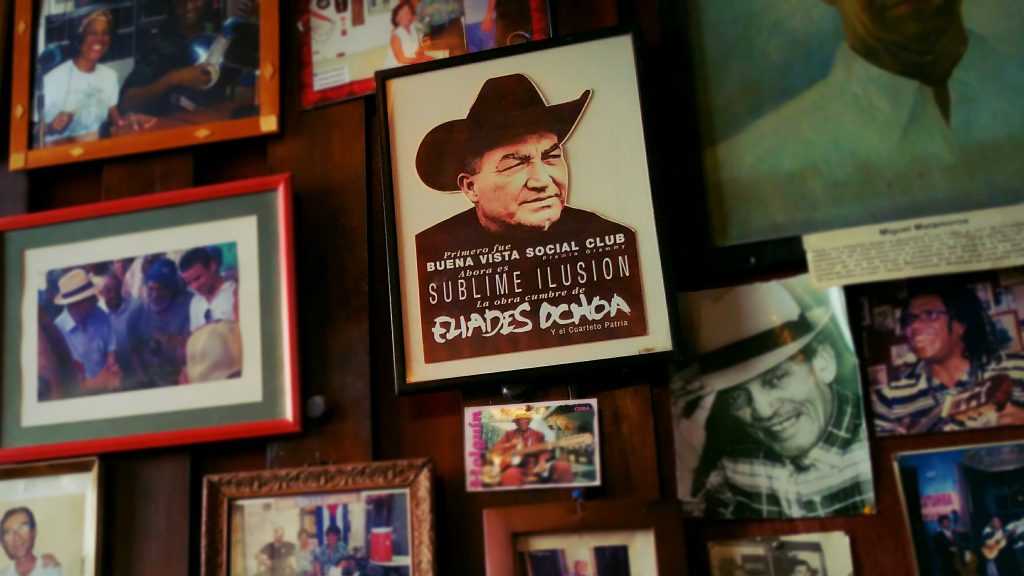Performing with a Mariachi Band

[vc_row][vc_column][vc_column_text]
I’m all set with a makeshift outfit for my mariachi guitar debut and head off for Guadalajara’s School of Mariachi.
When I arrive, the school is packed with students looking dapper, focused and ready to flex their mariachi muscles. I manage to join a group of students heading off in an A-Team style van.
[/vc_column_text][vc_separator color=”green”][/vc_column][/vc_row][vc_row][vc_column][vc_custom_heading text=”The Set List” font_container=”tag:h1|text_align:center” google_fonts=”font_family:Lobster%3Aregular|font_style:400%20regular%3A400%3Anormal” css=”.vc_custom_1480284449561{margin-top: 0px !important;}”][vc_custom_heading text=”A Fistful of Mariachi & Few Genres More…” font_container=”tag:h2|text_align:center” google_fonts=”font_family:Lobster%3Aregular|font_style:400%20regular%3A400%3Anormal” css=”.vc_custom_1592867174549{margin-top: 0px !important;}”][vc_row_inner][vc_column_inner width=”1/2″][vc_column_text]
Every mariachi setlist has a good mix of genres. The most common are son jalisciense, bolero, ranchera, huapango and joropo.
It’s the rhythms in mariachi music that most strongly define the genre, and the rhythm is set by the guitars, vihuelas (a smaller, sharper guitar with 5 strings) and guitarrons (a large acoustic bass guitar with 6 strings).
It’s essential for guitarists and vihuelists to get to grips with each genre’s basic rhythmic pattern, known in mariachi music as the base.
[/vc_column_text][/vc_column_inner][vc_column_inner width=”1/2″][vc_single_image image=”3489″ img_size=”full” add_caption=”yes” alignment=”center” style=”vc_box_shadow_border” onclick=”link_image”][/vc_column_inner][/vc_row_inner][vc_column_text]
As you can probably imagine, having just 24 hours to look over this multi-genre set list was a bit daunting. However, Cuba had given me a bit of a head start with one particular genre – the bolero.
[/vc_column_text][vc_separator color=”green”][/vc_column][/vc_row][vc_row][vc_column][vc_custom_heading text=”The Mariachi Bolero” font_container=”tag:h1|text_align:center” google_fonts=”font_family:Lobster%3Aregular|font_style:400%20regular%3A400%3Anormal” css=”.vc_custom_1469992942193{margin-top: 0px !important;}”][vc_column_text]
The Latin bolero was born in Santiago de Cuba, however, Mexico has played a massive part in the genre’s development, spreading its distinctly Mexican flavour of bolero throughout Latin America.
Mariachi boleros are played by an ensemble so the guitarist’s role is to play as part of a team of guitarists and vihuelists. This is in contrast to the solo, multitasking bolerístas commonly found in Cuba.
[/vc_column_text][/vc_column][/vc_row][vc_row top_margin=”0″ bottom_margin=”0″ css=”.vc_custom_1480310234499{padding-bottom: 15px !important;background-color: rgba(0,0,0,0.15) !important;*background-color: rgb(0,0,0) !important;border-radius: 20px !important;}”][vc_column][vc_empty_space height=”4px”][vc_custom_heading text=”Tricks of the Trade” font_container=”tag:h2|text_align:center” google_fonts=”font_family:Lobster%3Aregular|font_style:400%20regular%3A400%3Anormal” css=”.vc_custom_1592867526601{margin-top: 0px !important;}”][vc_column_text]
During a later video series that I recorded with Fernando, Mariachi Rhythms & Techniques, he let me in on some of the secrets to learning and teaching mariachi bolero techniques.
As usual with Fernando, there was no shortage of entertaining analogies. Subjects ranged from natural disasters to hand hygiene, and how playing mariachi guitar and vihuela can be very much like being in a romantic relationship.
Flick through the tabs below, listen to the interactive music notation and let Fernando guide you through the finer details…
[/vc_column_text][vc_tta_tabs style=”modern” spacing=”3″ gap=”5″ alignment=”center” active_section=”1″ css=”.vc_custom_1480306611188{background-color: rgba(0,0,0,0.2) !important;*background-color: rgb(0,0,0) !important;border-radius: 20px !important;}”][vc_tta_section i_type=”entypo” i_icon_entypo=”entypo-icon entypo-icon-note-beamed” add_icon=”true” title=”Basic Pattern (Base)” tab_id=”1480287913907-f14db2a5-4649″][vc_column_text]
Click play on the interactive music notation below.
The symbols above the notation indicate that all strumming is downwards, which is part of what gives this rhythm its simple but driving flow.
[/vc_column_text][vc_row_inner css=”.vc_custom_1496192019931{background-position: center !important;background-repeat: no-repeat !important;background-size: cover !important;border-radius: 5px !important;}”][vc_column_inner][vc_raw_html]JTNDaWZyYW1lJTIwc3JjJTNEJTIyaHR0cHMlM0ElMkYlMkZmbGF0LmlvJTJGZW1iZWQlMkY1OTJjYmRlY2ZjMDkyZTY4M2I3NTc2M2QlM0ZsYXlvdXQlM0R0cmFjayUyMiUyMGhlaWdodCUzRCUyMjQ1MCUyMiUyMHdpZHRoJTNEJTIyMTAwJTI1JTIyJTIwZnJhbWVCb3JkZXIlM0QlMjIwJTIyJTIwYWxsb3dmdWxsc2NyZWVuJTNFJTNDJTJGaWZyYW1lJTNF[/vc_raw_html][/vc_column_inner][/vc_row_inner][/vc_tta_section][vc_tta_section i_type=”entypo” i_icon_entypo=”entypo-icon entypo-icon-chart-bar” add_icon=”true” title=”Adding Dynamics” tab_id=”1480287914917-e7c81ec2-5b7f”][vc_column_text]
In this clip, Fernando explains how we should vary the volume of each strumming stroke. We should be aware of what others are playing and reinforce their rhythms using [tooltip position=”bottom” text=”Changes in loudness of notes relative to each other.”]dynamics[/tooltip].
And, although we should always play with a burning passion in our hearts, we must also show some restraint – or one day, we may just find ourselves being carted off to the slammer…
[/vc_column_text][vc_video link=”https://www.youtube.com/watch?v=m2GvYZrNbd0&feature=youtu.be&start=71&end=229″ align=”center”][/vc_tta_section][vc_tta_section i_type=”entypo” i_icon_entypo=”entypo-icon entypo-icon-flash” add_icon=”true” title=”Slapping (Apagones)” tab_id=”1480288078609-c259f56d-e83e”][vc_column_text]
We can add more action and momentum by using percussive slaps on the strings called apagones. This helps to add a percussive element to the mariachi ensemble, which doesn’t have any drummers.
As Fernando demonstrates in this clip, the process of learning the apagón technique can be a no-pain-no-gain endeavour and, surprisingly, your level of hand hygiene may also play its part. You should also take care not to cause any natural disasters in the process…
[/vc_column_text][vc_video link=”https://www.youtube.com/watch?v=mb2_MqnF9bo&feature=youtu.be&start=404&end=539″][/vc_tta_section][/vc_tta_tabs][/vc_column][/vc_row][vc_row][vc_column][vc_column_text]
A song that showcases all of these skills perfectly is the classic mariachi bolero, ‘Mi Viejo‘ (‘My Old Man’). This was one of the tracks on the set list for my mariachi debut.
[/vc_column_text][vc_separator color=”green”][/vc_column][/vc_row][vc_row][vc_column][vc_custom_heading text=”The Performance” font_container=”tag:h1|text_align:center” google_fonts=”font_family:Lobster%3Aregular|font_style:400%20regular%3A400%3Anormal” css=”.vc_custom_1477512369794{margin-top: 0px !important;}”][vc_custom_heading text=”‘Mi Viejo'” font_container=”tag:h2|text_align:center” google_fonts=”font_family:Lobster%3Aregular|font_style:400%20regular%3A400%3Anormal” css=”.vc_custom_1592867685088{margin-top: 0px !important;}”][vc_column_text]
We lined up in rows: singers taking turns at the front with violins and guitarrons supporting directly behind them. Further back, were the louder instruments: guitars and vihuelas first, then trumpets further to the right.
I had experienced a fair few mariachi performances but only from the crowd. What would it be like to experience it from the inside? I squeezed in on the row just behind the raised stage and tuned up my guitar.
I decided to focus on riding those changes and timing my slaps well (without getting into trouble with the local policía).
If you have trouble finding me in the video, just look for the really pale one bobbing his around to stay in time, intermittently peering over at a neighbouring mariachi’s fretboard.
[/vc_column_text][vc_video link=”https://youtu.be/GSHQyUlenXc” align=”center” css=”.vc_custom_1592867708153{background-color: rgba(0,0,0,0.15) !important;*background-color: rgb(0,0,0) !important;}”][vc_row_inner][vc_column_inner][vc_single_image image=”3510″ img_size=”full” add_caption=”yes” alignment=”center” style=”vc_box_shadow_border” onclick=”link_image”][/vc_column_inner][/vc_row_inner][vc_separator color=”green”][/vc_column][/vc_row][vc_row][vc_column][vc_custom_heading text=”An Invitation to Become a Student at the School” font_container=”tag:h1|text_align:center” google_fonts=”font_family:Lobster%3Aregular|font_style:400%20regular%3A400%3Anormal” css=”.vc_custom_1470017356786{margin-top: 0px !important;}”][vc_column_text]
Once the show was over, Fernando congratulated me on my first mariachi gig and invited me to return to the school the following Monday to begin studying mariachi music.
A few of us piled back into the van and the playing continued. I sat there laughing to myself thinking: this is crazy – I’m in the back of a van with a bunch of mariachis in the middle of Mexico.
[/vc_column_text][vc_single_image image=”3044″ img_size=”full” alignment=”center” onclick=”link_image”][vc_separator color=”green”][/vc_column][/vc_row][vc_row top_margin=”0″ bottom_margin=”0″ css=”.vc_custom_1480347647273{background-color: rgba(0,0,0,0.18) !important;*background-color: rgb(0,0,0) !important;border-radius: 20px !important;}”][vc_column][vc_empty_space height=”8px”][vc_custom_heading text=”Watch the Full Series with Fernando Briseño…” font_container=”tag:h1|text_align:center” google_fonts=”font_family:Lobster%3Aregular|font_style:400%20regular%3A400%3Anormal” css=”.vc_custom_1480347610589{margin-top: 0px !important;}”][vc_single_image image=”3492″ img_size=”full” alignment=”center” onclick=”custom_link” img_link_target=”_blank” link=”https://www.youtube.com/playlist?list=PLtY6Sqhwthv-RFNXGX2ETZHL0nLfexH7_”][/vc_column][/vc_row][vc_row][vc_column][vc_raw_js]JTNDZGl2JTIwaWQlM0QlMjJmYi1yb290JTIyJTNFJTNDJTJGZGl2JTNFJTBBJTNDc2NyaXB0JTNFJTI4ZnVuY3Rpb24lMjhkJTJDJTIwcyUyQyUyMGlkJTI5JTIwJTdCJTBBJTIwJTIwdmFyJTIwanMlMkMlMjBmanMlMjAlM0QlMjBkLmdldEVsZW1lbnRzQnlUYWdOYW1lJTI4cyUyOSU1QjAlNUQlM0IlMEElMjAlMjBpZiUyMCUyOGQuZ2V0RWxlbWVudEJ5SWQlMjhpZCUyOSUyOSUyMHJldHVybiUzQiUwQSUyMCUyMGpzJTIwJTNEJTIwZC5jcmVhdGVFbGVtZW50JTI4cyUyOSUzQiUyMGpzLmlkJTIwJTNEJTIwaWQlM0IlMEElMjAlMjBqcy5zcmMlMjAlM0QlMjAlMjIlMkYlMkZjb25uZWN0LmZhY2Vib29rLm5ldCUyRmVuX0dCJTJGc2RrLmpzJTIzeGZibWwlM0QxJTI2dmVyc2lvbiUzRHYyLjUlMjZhcHBJZCUzRDE3MDEyMDIwNTAxMjUwMTUlMjIlM0IlMEElMjAlMjBmanMucGFyZW50Tm9kZS5pbnNlcnRCZWZvcmUlMjhqcyUyQyUyMGZqcyUyOSUzQiUwQSU3RCUyOGRvY3VtZW50JTJDJTIwJTI3c2NyaXB0JTI3JTJDJTIwJTI3ZmFjZWJvb2stanNzZGslMjclMjklMjklM0IlM0MlMkZzY3JpcHQlM0U=[/vc_raw_js][vc_raw_js]JTNDZGl2JTIwY2xhc3MlM0QlMjJmYi1wYWdlJTIyJTIwZGF0YS1ocmVmJTNEJTIyaHR0cHMlM0ElMkYlMkZ3d3cuZmFjZWJvb2suY29tJTJGT3BlblNhdWNlR3VpdGFyJTIyJTIwZGF0YS1zbWFsbC1oZWFkZXIlM0QlMjJmYWxzZSUyMiUyMGRhdGEtYWRhcHQtY29udGFpbmVyLXdpZHRoJTNEJTIydHJ1ZSUyMiUyMGRhdGEtaGlkZS1jb3ZlciUzRCUyMmZhbHNlJTIyJTIwZGF0YS1zaG93LWZhY2VwaWxlJTNEJTIyZmFsc2UlMjIlM0UlM0NkaXYlMjBjbGFzcyUzRCUyMmZiLXhmYm1sLXBhcnNlLWlnbm9yZSUyMiUzRSUzQ2Jsb2NrcXVvdGUlMjBjaXRlJTNEJTIyaHR0cHMlM0ElMkYlMkZ3d3cuZmFjZWJvb2suY29tJTJGT3BlblNhdWNlR3VpdGFyJTIyJTNFJTNDYSUyMGhyZWYlM0QlMjJodHRwcyUzQSUyRiUyRnd3dy5mYWNlYm9vay5jb20lMkZPcGVuU2F1Y2VHdWl0YXIlMjIlM0VPcGVuJTIwU2F1Y2UlMjBHdWl0YXIlM0MlMkZhJTNFJTNDJTJGYmxvY2txdW90ZSUzRSUzQyUyRmRpdiUzRSUzQyUyRmRpdiUzRQ==[/vc_raw_js][vc_raw_js]JTNDJTIxLS0lMjBGYWNlYm9vayUyMFBpeGVsJTIwQ29kZSUyMC0tJTNFJTBBJTNDc2NyaXB0JTNFJTBBJTIxZnVuY3Rpb24lMjhmJTJDYiUyQ2UlMkN2JTJDbiUyQ3QlMkNzJTI5JTdCaWYlMjhmLmZicSUyOXJldHVybiUzQm4lM0RmLmZicSUzRGZ1bmN0aW9uJTI4JTI5JTdCbi5jYWxsTWV0aG9kJTNGJTBBbi5jYWxsTWV0aG9kLmFwcGx5JTI4biUyQ2FyZ3VtZW50cyUyOSUzQW4ucXVldWUucHVzaCUyOGFyZ3VtZW50cyUyOSU3RCUzQmlmJTI4JTIxZi5fZmJxJTI5Zi5fZmJxJTNEbiUzQiUwQW4ucHVzaCUzRG4lM0JuLmxvYWRlZCUzRCUyMTAlM0JuLnZlcnNpb24lM0QlMjcyLjAlMjclM0JuLnF1ZXVlJTNEJTVCJTVEJTNCdCUzRGIuY3JlYXRlRWxlbWVudCUyOGUlMjklM0J0LmFzeW5jJTNEJTIxMCUzQiUwQXQuc3JjJTNEdiUzQnMlM0RiLmdldEVsZW1lbnRzQnlUYWdOYW1lJTI4ZSUyOSU1QjAlNUQlM0JzLnBhcmVudE5vZGUuaW5zZXJ0QmVmb3JlJTI4dCUyQ3MlMjklN0QlMjh3aW5kb3clMkMlMEFkb2N1bWVudCUyQyUyN3NjcmlwdCUyNyUyQyUyN2h0dHBzJTNBJTJGJTJGY29ubmVjdC5mYWNlYm9vay5uZXQlMkZlbl9VUyUyRmZiZXZlbnRzLmpzJTI3JTI5JTNCJTBBJTBBZmJxJTI4JTI3aW5pdCUyNyUyQyUyMCUyNzE3Mzk3NTEwNjI5NzczNDklMjclMjklM0IlMEFmYnElMjglMjd0cmFjayUyNyUyQyUyMCUyMlBhZ2VWaWV3JTIyJTI5JTNCJTNDJTJGc2NyaXB0JTNFJTBBJTNDbm9zY3JpcHQlM0UlM0NpbWclMjBoZWlnaHQlM0QlMjIxJTIyJTIwd2lkdGglM0QlMjIxJTIyJTIwc3R5bGUlM0QlMjJkaXNwbGF5JTNBbm9uZSUyMiUwQXNyYyUzRCUyMmh0dHBzJTNBJTJGJTJGd3d3LmZhY2Vib29rLmNvbSUyRnRyJTNGaWQlM0QxNzM5NzUxMDYyOTc3MzQ5JTI2ZXYlM0RQYWdlVmlldyUyNm5vc2NyaXB0JTNEMSUyMiUwQSUyRiUzRSUzQyUyRm5vc2NyaXB0JTNFJTBBJTNDJTIxLS0lMjBFbmQlMjBGYWNlYm9vayUyMFBpeGVsJTIwQ29kZSUyMC0tJTNF[/vc_raw_js][/vc_column][/vc_row]





